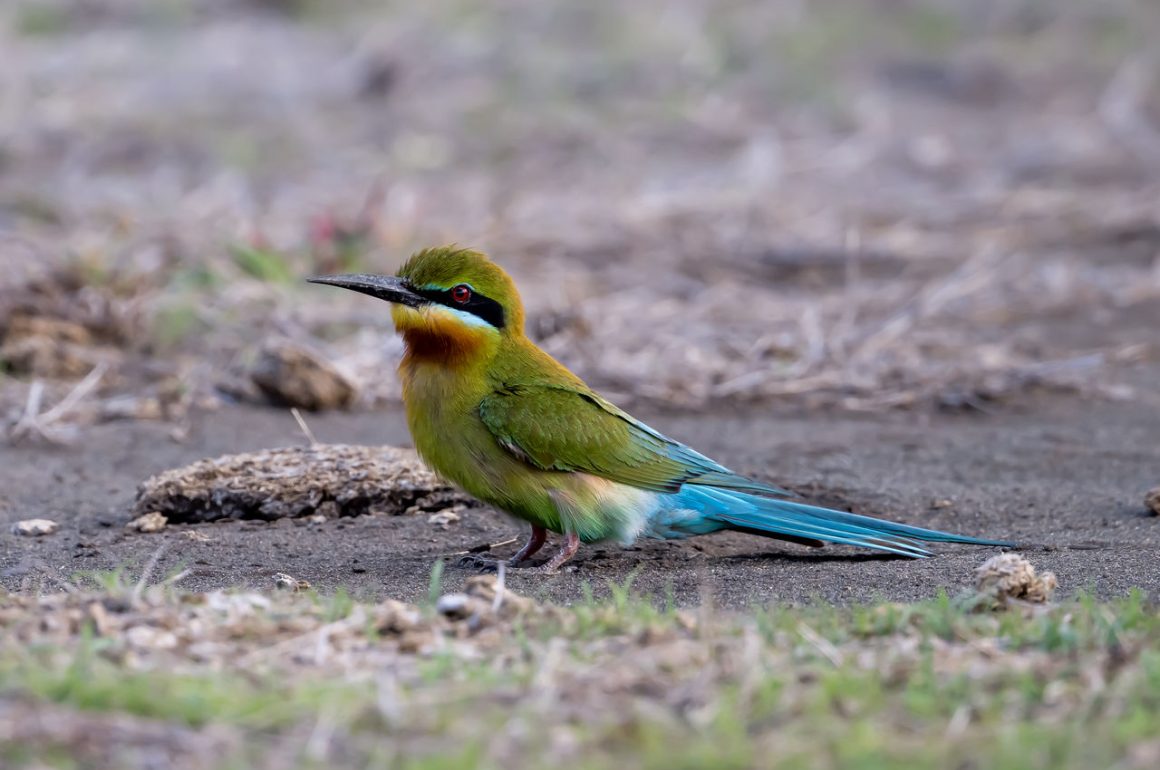
Most birders visiting Bali probably come for the Bali Myna – it is indeed a great bird, but one which has already been the topic of a previous post. So, not much ado about it here – just two photos of a pair that I took outside of the core area of the park, hopefully indicating some gradual range extension of the species.
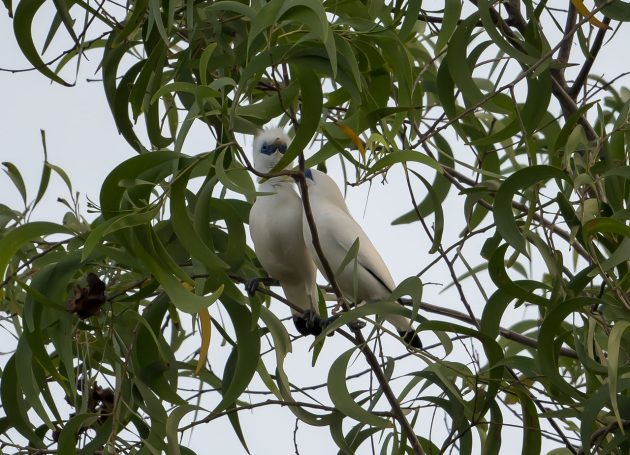
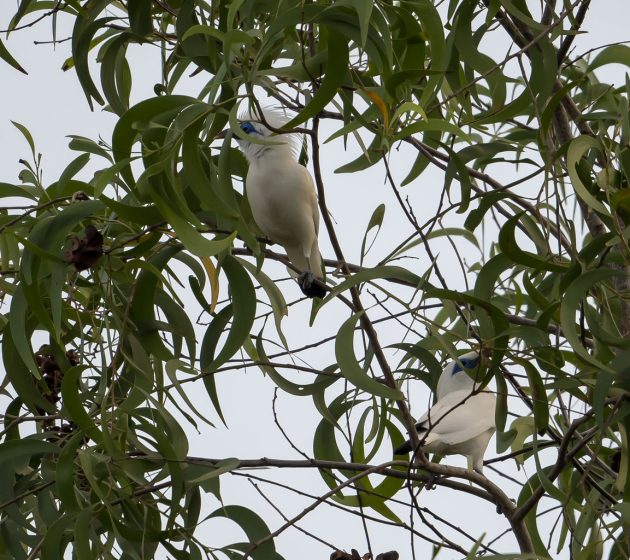
This leaves some interesting species in the area of the Bali Barat National Park.
I particularly liked the Blue-tailed Bee-eater (which Grammarly wants to change to Beef-eater, so it clearly is not as much into birds as most of the readers of 10,000 Birds).
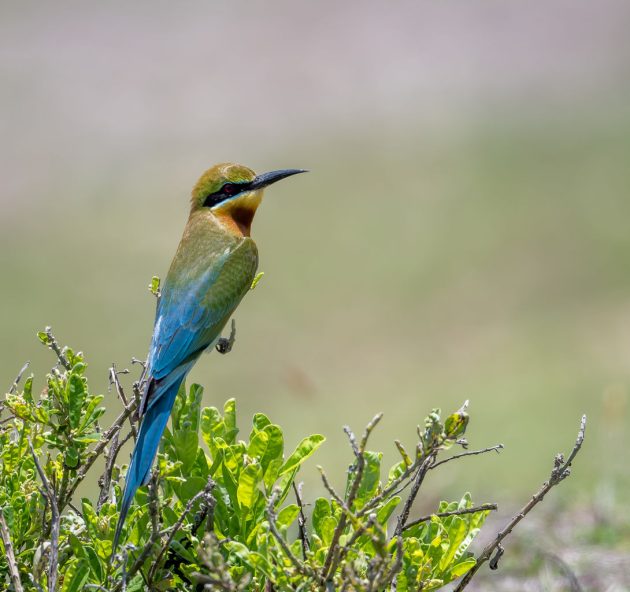
While the Cornell distribution map indicates that Bali is a non-breeding area for the bird, the holes in the ground seem to indicate nesting burrows. So probably Cornell is wrong about this.
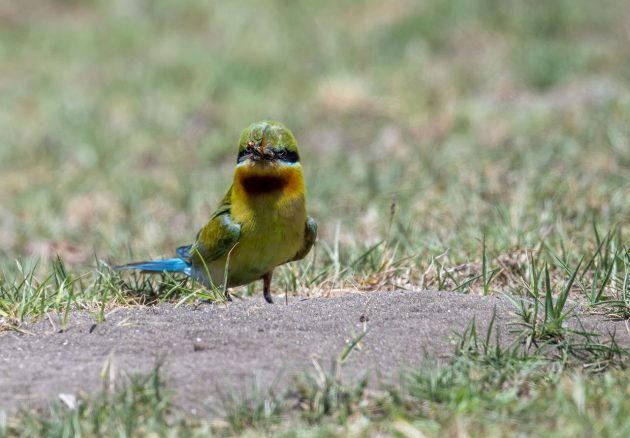
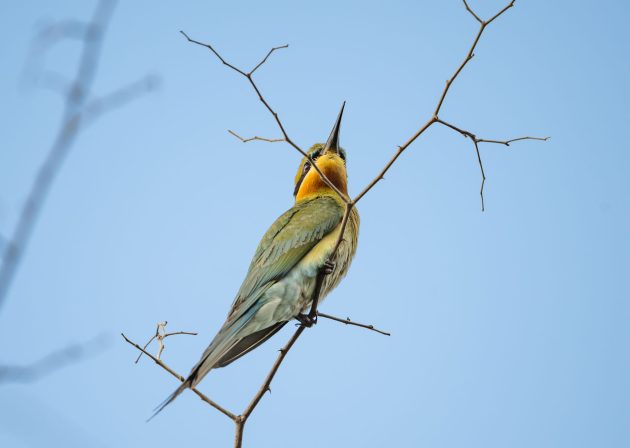
eBird seems to share my taste, calling the species an “Elegant, slender bird”.
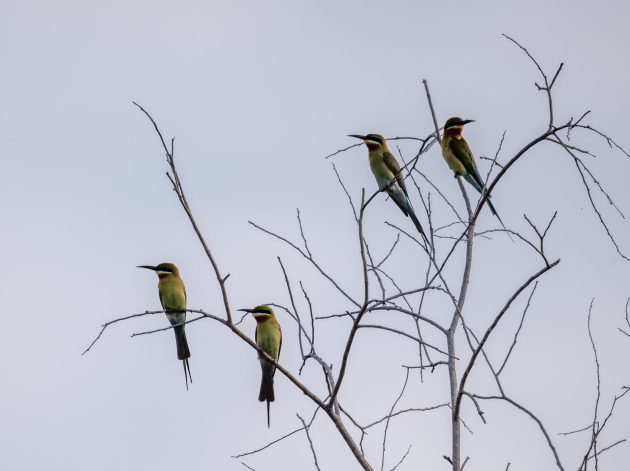
Their sex life sounds interesting too – apparently, evidence suggests cooperative breeding, intraspecific brood parasitism, and extrapair copulation.
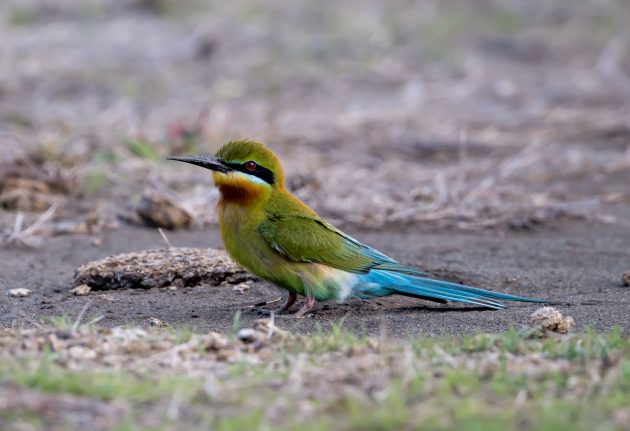
The species may even benefit from commercial sand digging – it initially creates suitable nesting habitats but typically subsequently reduces their breeding success by destroying their nests unless the sand digging is modified to provide stable nesting habitats for bee-eaters.
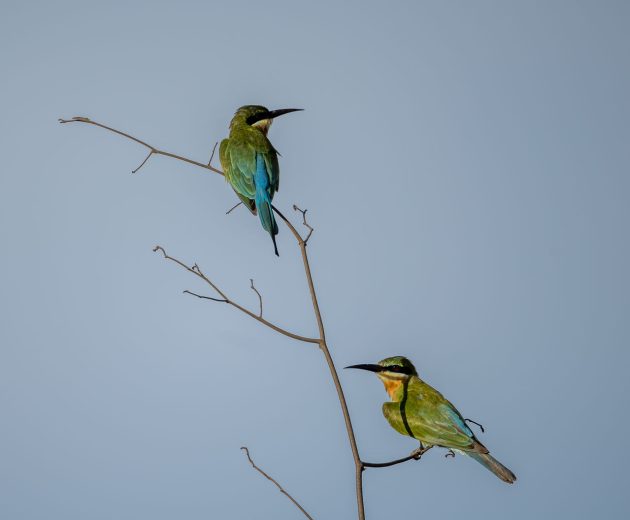
Another bird seen at the same location as the bee-eater was the Green Jungle Fowl.
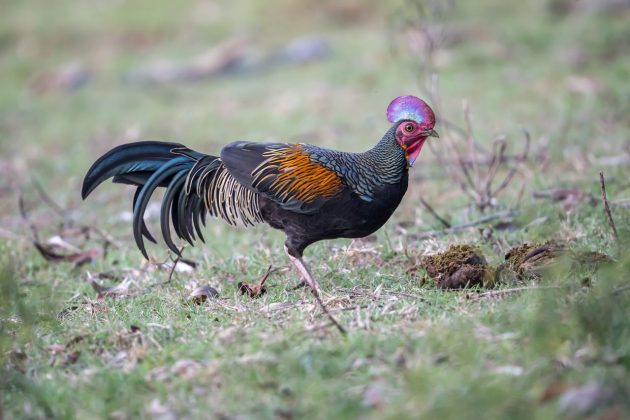
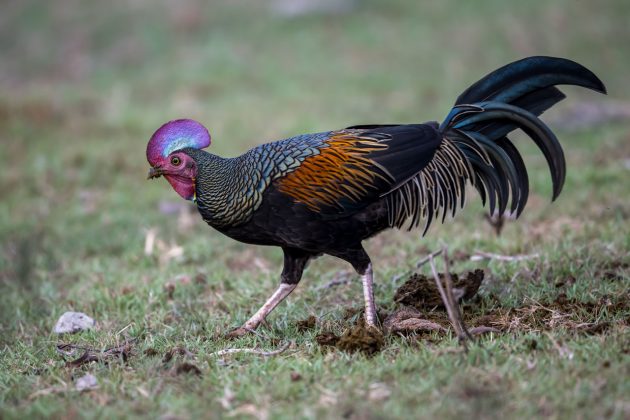
Busy examining cow pads for undigested edible parts. No Photoshop for me.
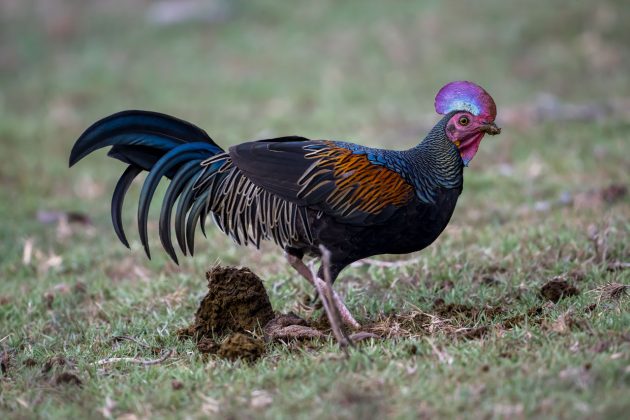
eBird rightly calls it (or at least the male) a “Fancy-looking ‘chicken’ endemic to Java and the Lesser Sundas”.
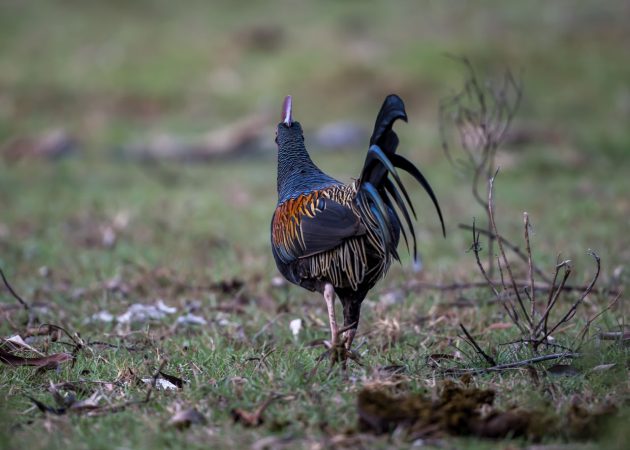
The Javan Myna was once restricted to Java and Bali but has since spread to places including Taiwan and Singapore. At the same time, trapping is a big threat for the species in Java and Bali – it is categorized as Vulnerable.
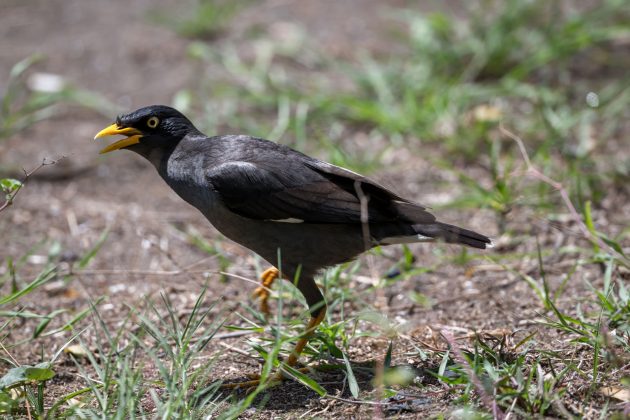
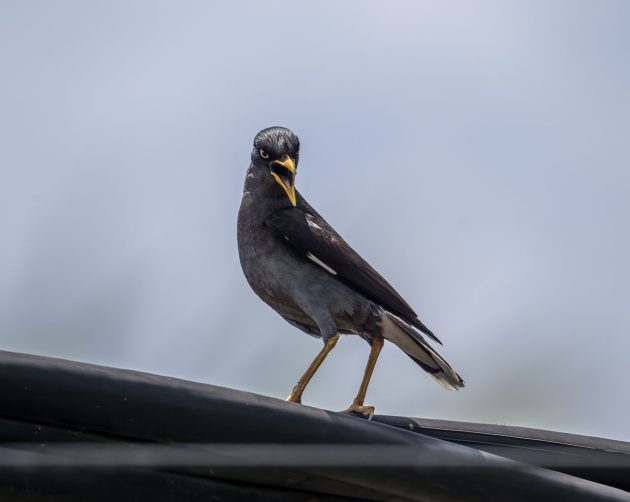
The number of Javan Myna kept as cage birds is frighteningly large. A 2018 survey of bird ownership involving over 3,000 households in Java estimated that 550,000 to 800,000 individuals were currently kept in Java alone (source) while the wild combined population in Java and Bali is only estimated at 2,500 to 10,000 birds.
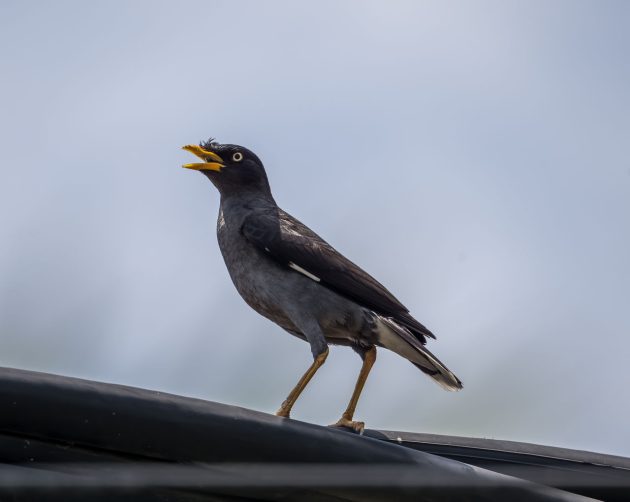
Apparently, the subspecies Treron bicinctus javanus of the Orange-breasted Green Pigeon is relatively rare (the overall species is not).
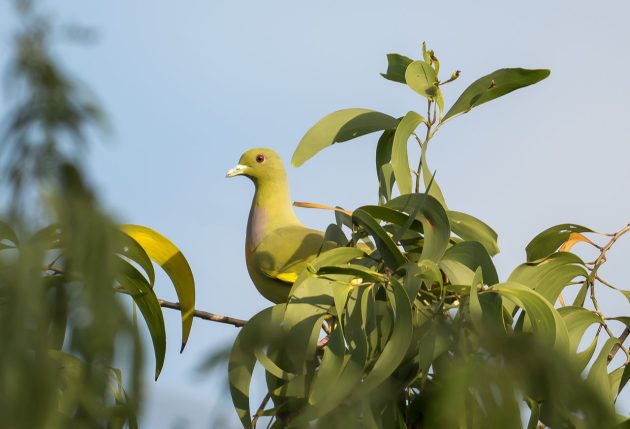
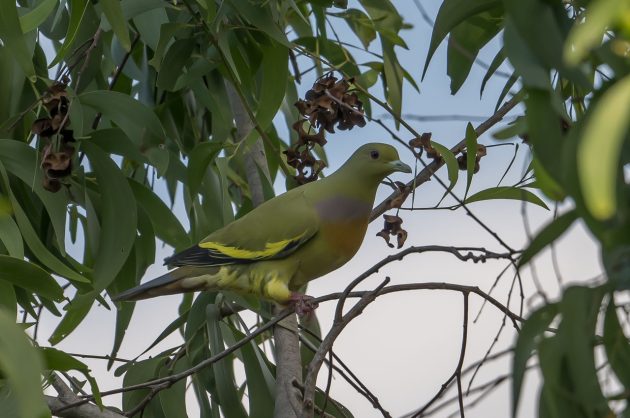
The bicinctus in the scientific name means “double-banded” and presumably refers to the narrow band of pink on the upper breast and the broader orange breast band below.
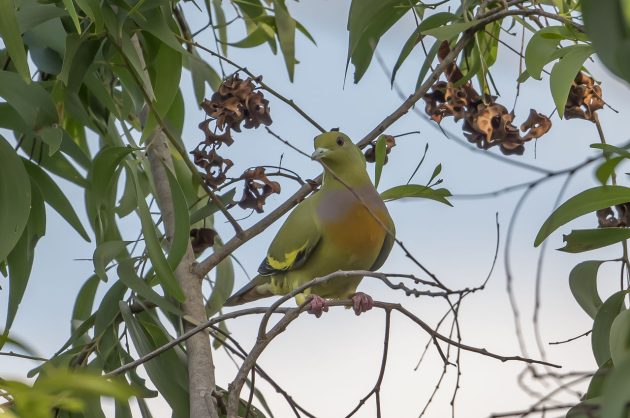
Common birds seen around Bali Barat National Park also include …
… Pied Triller …
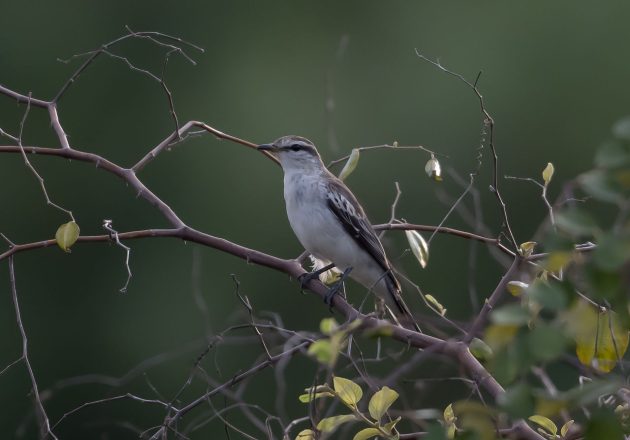
… Sooty-headed Bulbul …
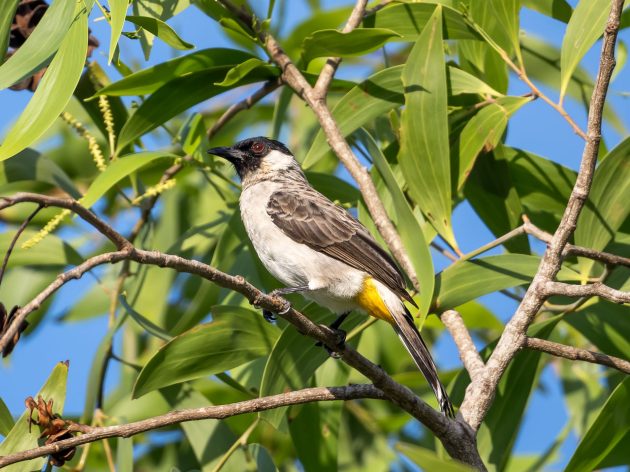
… and Yellow-vented Bulbul.
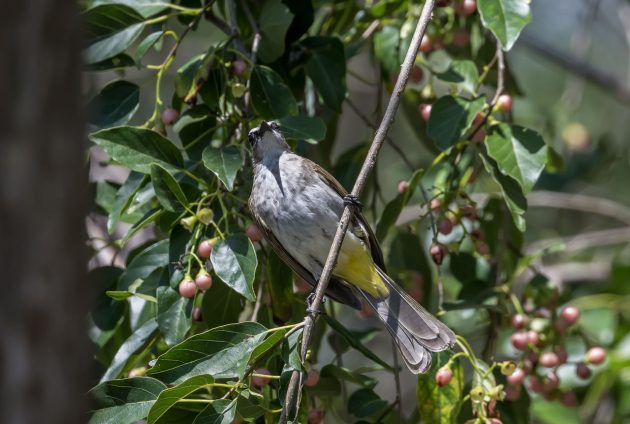
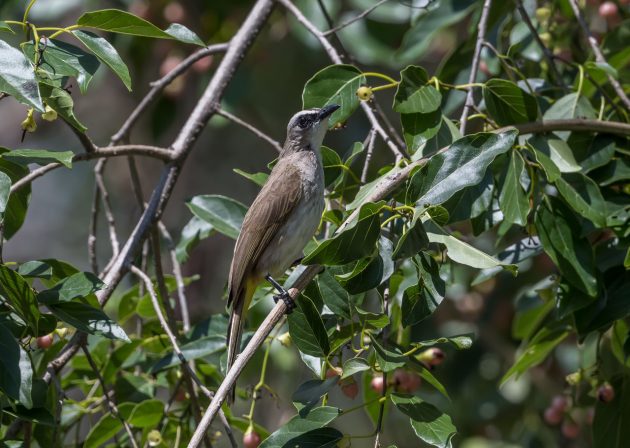
A Pacific Reef Heron in a miniature lagoon did not seem frightened by the appearance of a bird photographer.
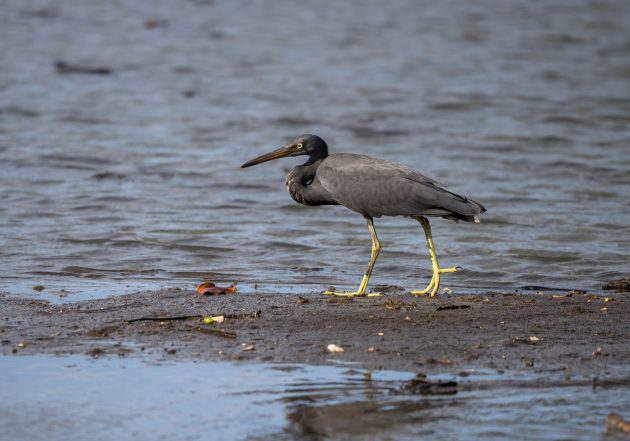
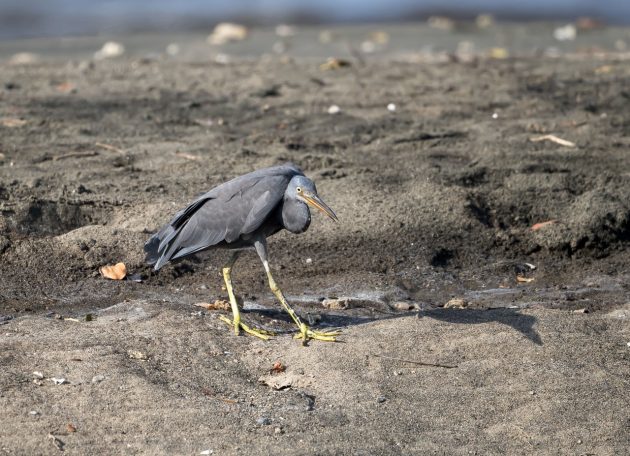
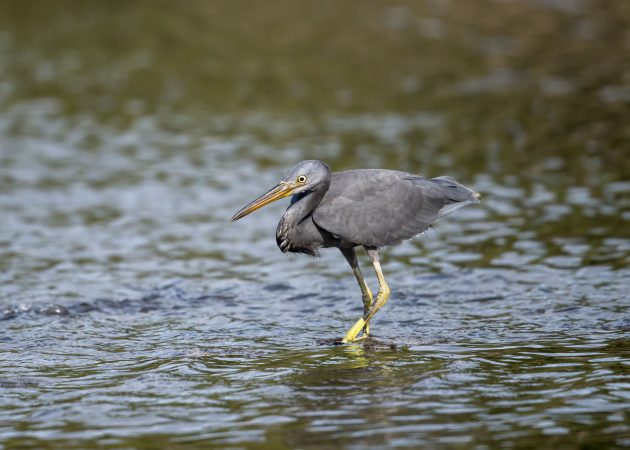
It kept searching its little pool for fish.
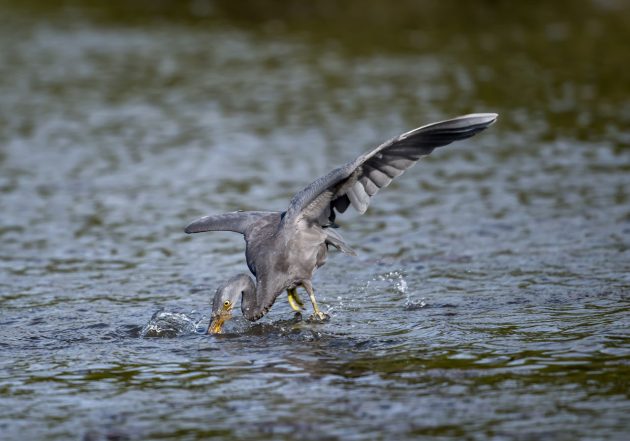
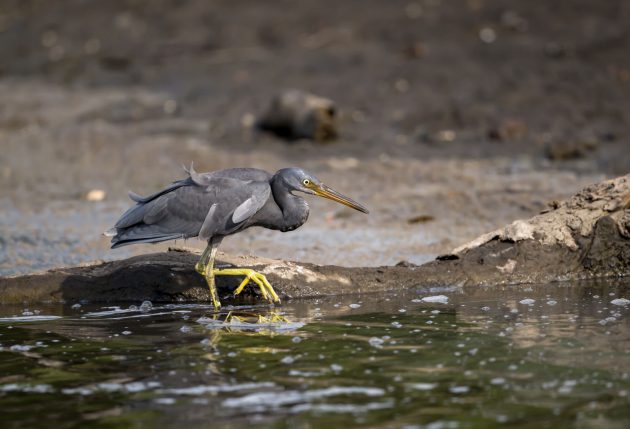
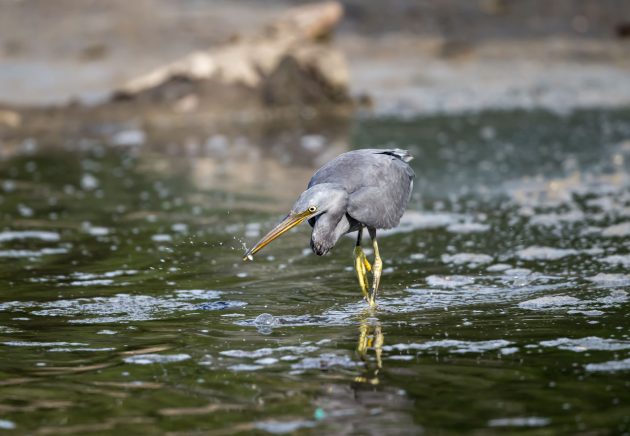
I just kept watching and taking photos until it was time to leave.
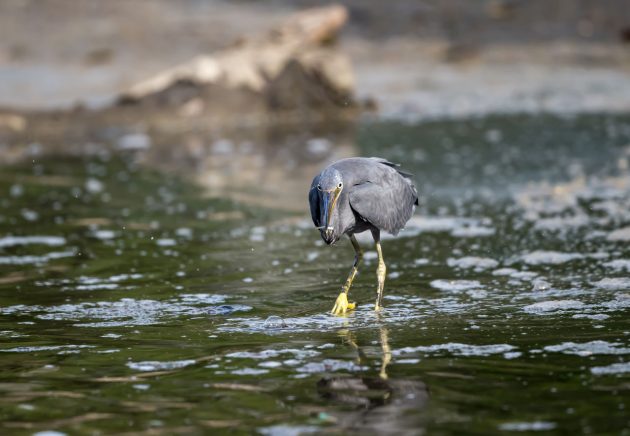
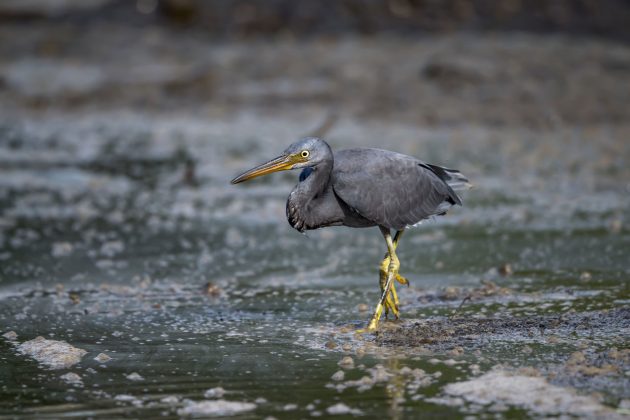
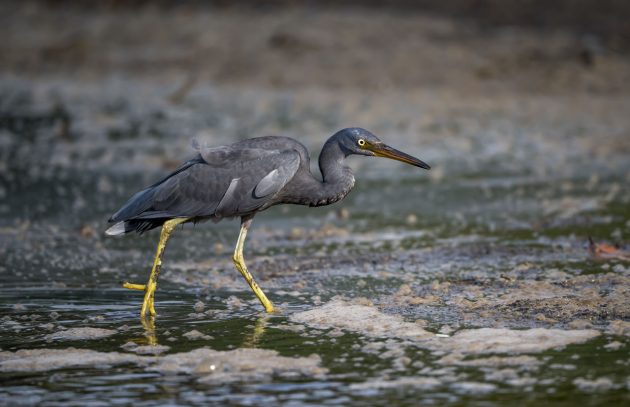
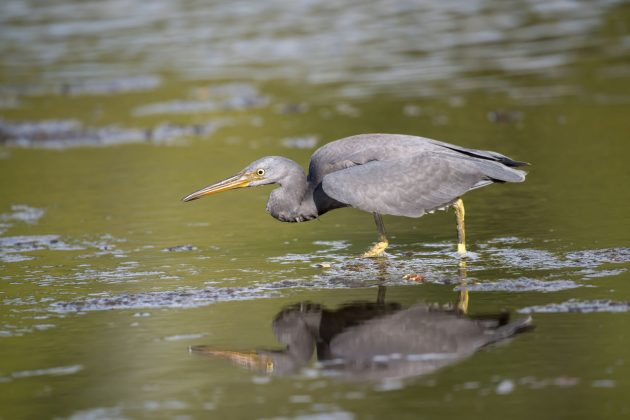






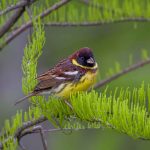

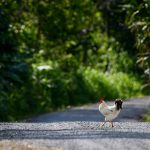

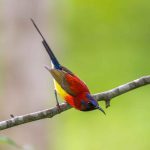

Only stayed one night, so now I wonder: should I have spent more time on Bali?
Peter: Not really, unless you spend 5 hours going to Bali Barat (and another 5 hours back). The guide I went with was originally from Bali but said that the birds are much better in Eastern Java, where I spent the bulk of my trip.